Search Images
Browse Content (p. 1592)

Image
Stone Foundation Document of King Adad-Nirari I
Rectangular stone foundation document of the Assyrian king Adad-Nirari I. It recounts the king's victories over the Mitanni, who had failed to gain Hittite support, and the extension of Assyrian rule west to the Euphrates. The stone appears...
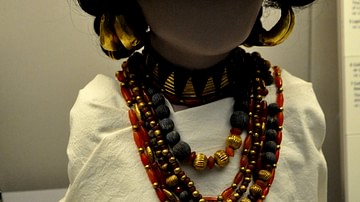
Image
Headdress and Necklaces from the Royal Cemetery of Ur
An elaborate headdress and necklace made of gold, lapis lazuli, and carnelian which belonged to a high-level Sumerian woman. These were found in the "Great Death-Pit", one of the graves in the Royal Cemetery at Ur. From Ur, southern Mesopotamia...

Image
Map of Ancient Georgian States (600-150 BCE)
Map showing the ancient states in the western Caucasus (modern-day Georgia) from c. 600 BCE to 150 BCE.
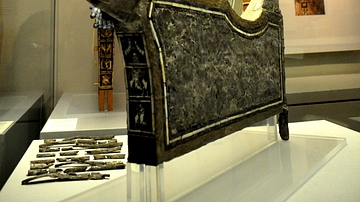
Image
Silver Lyre, Ur, Mesopotamia
This lyre was found in the 'Great Death-Pit', one of the graves in the Royal Cemetery at Ur. From Ur, southern Mesopotamia, Iraq. Early dynastic period, 2600-2400 BCE. (The British Museum, London)
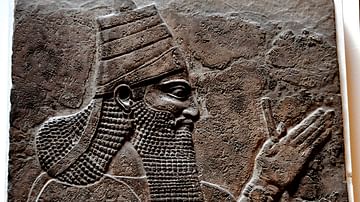
Image
King Tiglath-pileser III
An alabaster bas-relief depicting the Assyrian king Tiglath-pileser III. From the central palace, Nimrud (ancient Kalhu), Mesopotamia, northern Iraq. Neo-Assyrian era, circa 728 BCE. (The British Museum, London)
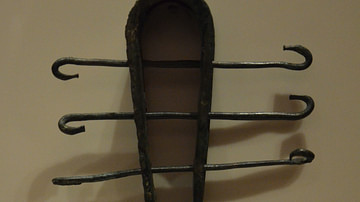
Image
Ancient Egyptian Sistrum
Bronze Sistrum (rhythm instrument) with handle in the shape of the god Bes, 30th Dynasty, c. 350 BCE. (Neues Museum, Berlin)
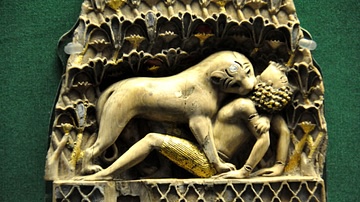
Image
Lioness Devouring a Boy, Phoenician Ivory Panel
This Phoenician carved ivory panel is one of an almost identical pair with one now in the Iraq Museum, Baghdad. They originally formed part of a piece of furniture, perhaps a throne. The incised letter 'aleph' beside holes on the top and...

Image
Foundation Pegs, from Ningirsu Temple, Girsu
Each peg has a very faint cuneiform inscription of Gudea, the ruler of the city-state of Lagash. Foundation pegs were buried in the foundation of buildings to magically protect them and preserve the builder's name for posterity. In this...
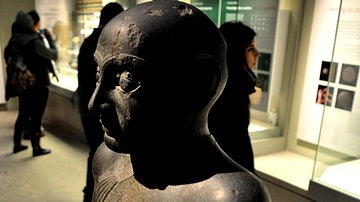
Image
Dolerite Statue of Gudea, ruler of Lagash
Dolerite statue of Gudea, ruler of Lagash. Upper part of standing figure with head; carved and polished mottled green dolerite; but neck restored; represents Gudea, king of Lagash. It is possible that the head and body were not originally...
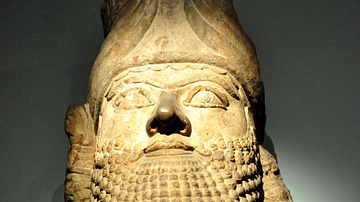
Image
Human-headed Winged-bull
This is one of the few surviving sculptures from the palace which Esarhaddon left unfinished at his death. Neo-Assyrian era, circa 670 BCE. From the south-west palace at Nimrud, Mesopotamia, Iraq. (The British Museum, London)